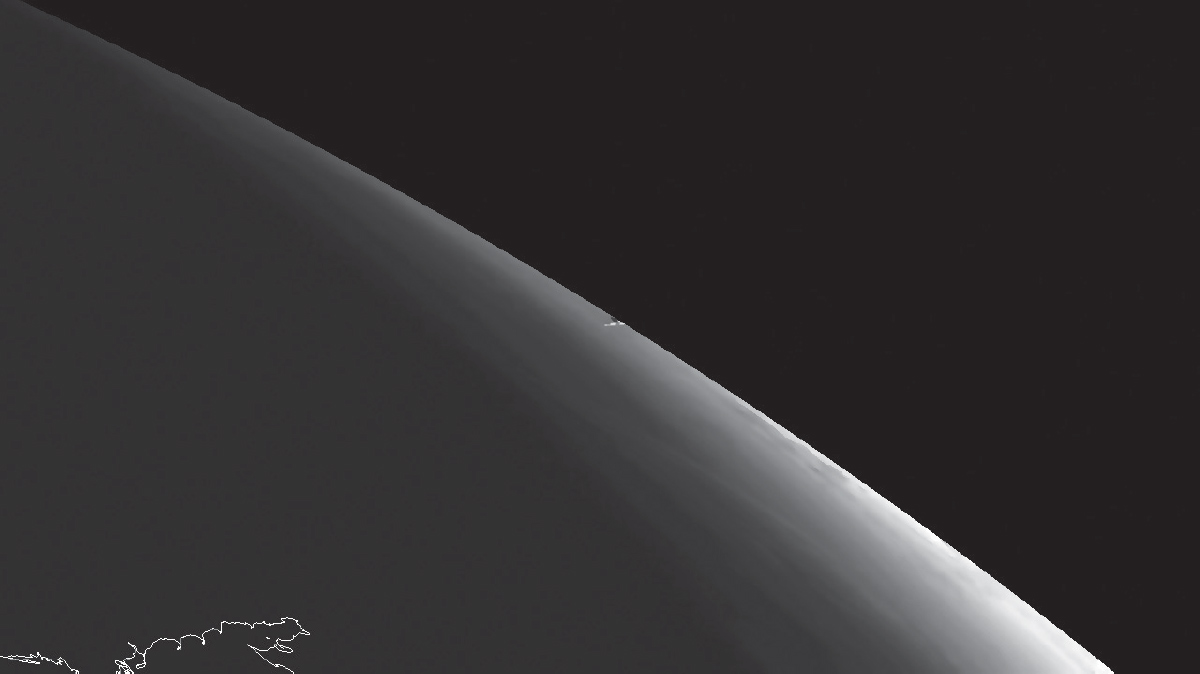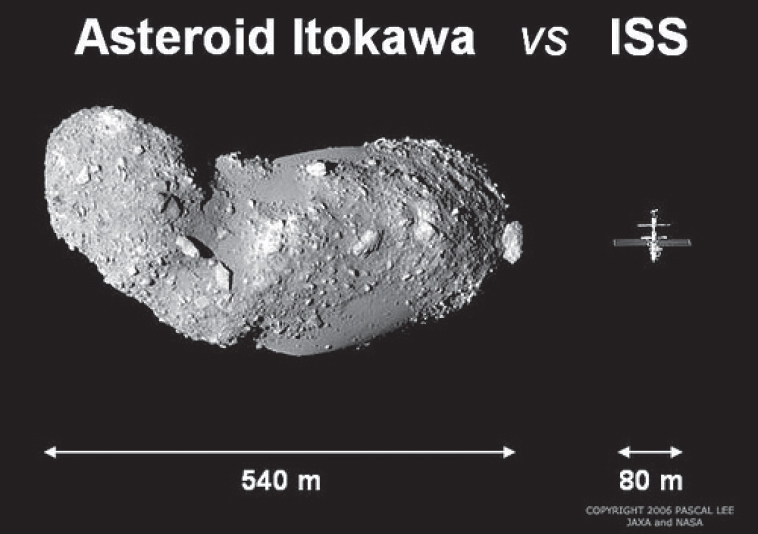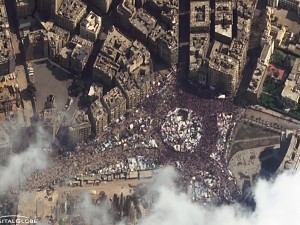There is an ongoing hunt for asteroids and other hazardous natural objects that may have cross-hairs on our home planet. These near-Earth object (NEOs) are asteroids or comets with an array of sizes and shapes that orbit the Sun and whose orbits come close to that of Earth. There are over 600,000 asteroids know in our solar system, and almost 10,000 of them are NEOs.
NEOs have-and surely will in the future-thumped our world and shaken up our life-sustaining ecosystem.
Indeed, over the enos, it has been a celestial slugfest. Comets and asteroids have struck the Earth since its formation 4.5 billion year ago. On one hand, there is no need to toss and turn in bed worrying about a massive space rock mussing up our world. However, while the odds of a nasty impact here on Earth in the near further are small, they are not zero…and the consequence of a hefty NEO colliding with the planet would be extreme.
But one recent incident quite literally punctuated that prospect. A large fireball-also termed a “superbolide”- detonated at 9:22 a.m. (local time) on February 15, 2013 over the city of Chelyabinsk in Russia and is considered by many experts as a 21st century cosmic wake-up call.
That previously undetected object, thought to be 55-65 feet (17-20 meters) in diameter struck the atmosphere moving at about 40,000 miles per hour, exploding nearly 15 miles (24 kilometers) above Chelyabinsk with 20-30 times the energy of the Hiroshima atomic bomb. The shock wave it produced at high altitude took nearly 90 seconds to reach the landscape, destroying many windows in that city and in surrounding towns, with numbers of people wounded by flying fragments of broken glass. A part of the roof and a wall of a zinc plant and a stadium in Chelyabinsk were also damaged. See Figures 1-2.

FIGURE 1.
Trace of an alien visitor. An object entered the atmosphere over the Urals early in the morning of February 15, 2013. The fireball exploded above the city of Chelyabinsk, resulting in damage to buildings and injuriesto hundreds of people. This photo was taken by Alex Alishevskikh about a minute after noticing the blast. Credit: Alex Alishevskikh, courtesy European Space Agency.

FIGURE 2.
An image from the Spinning Enhanced Visible and Infrared Imager (SEVIRI) instrument’s High Resolution Visible (HRV) channel aboard Eumetsat’s Meteosat-10 geostationary
satellite. The vapor trail visible was left by an asteroid that struck Earth near Chelyabinsk, Russia on February 15, 2013. See Figure 1. Credit: Eumetsat.
The fireball’s shock wave caused widespread damage and injuries making it the largest known natural object to have entered the atmosphere since the 1908 Tunguska event. That history-making saga involved a rocky impactor that detonated over remote Siberia, toppling about 500,000 acres of forest. Getting to know NEOs has a very real, practical side: There’s need to find them before they find us. We live in a cosmic shooting gallery, so ways to defend ourselves from NEOs need careful study. If there is adequate warning time, we have the means to guard the Earth from impacts—a luxury that apparently the dinosaurs were not afforded.
By making use of ground and space-based technology, humankind does have the ability to anticipate a large-scale impact. Preventing such an occurrence is another matter. To protect life from such a vicious event is an environmental challenge, one that calls upon integrating technology, space policy, and international involvement to launch a global response.
KNOW THE ENEMY
Protecting our planet from impacts by NEOs means getting to know the enemy, some of which are very large. See Figure 3.

FIGURE 3.
Asteroids come in all sizes, as depicted in this montage of the Itokawa asteroid using the International Space Station for scale. Credit: Pascal Lee, NASA.
The seriousness of the issue brought together nearly 300 authorities from around the world to attend the International Academy of Astronautics’ Planetary Defense Conference, held April 15-19 of this year in Flagstaff, Arizona—a meeting co-sponsored by Secure World Foundation (SWF), NASA, the European Space Agency, the Japan Aerospace Exploration Agency, the Romanian Space Agency, the United Kingdom Space Agency, and ROSCOSMOS, the Russian Space Agency. See Figure 4.

FIGURE 4.
Experts from around the globe met at a Planetary Defense Conference, held April 15-19, 2013, in Flagstaff, Arizona. The meeting included an exercise where participants simulated the decision- making process for developing deflection and civil defense responses to a hypothetical asteroid threat. Credit: Leonard David
The good news here is that the involvement of these agencies is crucial since planetary defense is an international concern. Should an object on an Earth impact trajectory be discovered, it is possible, and in fact likely, that several space-faring nations would be involved in a deflection/disruption campaign.
Papers given covered such topics as discovering NEOs, characterization of the objects, mitigation techniques and missions, as well as impact effects, consequence management and education.
What might be done to prevent an impact if a threatening object on a collision course with Earth is discovered? Garnering the most discussion at the meeting were overviews of the latest research on deflection and disruption techniques and on missions and techniques that might deliver a deflection/disruption payload to an Earth threatening object. A diversity of ideas, concepts and techniques are on the table, be they smacking into a NEO with a high-speed projectile,laser-blasting the object, or even using nuclear detonations.
COMMUNICATIONS STRATEGY
Also presented at the unique planetary defense gathering was SWF’s report on NEO risk for media and communications in support of deliberations on the matter by the United Nations. Secure World Foundation and the Association of Space Explorers hosted a 2011 workshop to explore the communications of an International Analysis and Warning Network. That two-day workshop brought together journalists, scientists, policy makers, and experts in risk and disaster management to scope out the elements of an effective communications strategy and provide guidance for an outreach and education plan as central elements of an effective response plan to the NEO threat.
Establishing an effective international communications strategy for potentially hazardous NEOs or an impending NEO strike is a daunting task that will require effective use of mass communication tools, from television to the Internet, and other information channels and technologies. General education should include information about NEOs and their place in our solar system, the nature of the potential threat, and specific information related to warning of a potentially hazardous NEO.
A key organization that has focused on what to do about NEOs is the United Nations Scientific and Technical Subcommittee’s Action Team on Near-Earth Objects (AT-14), under the wing of the UN Committee on the Peaceful Uses of Outer Space. AT-14 was established in 2001, keen on pushing forward an international response to the NEO impact threat.
There’s an important new aspect to NEO research. A newly crafted MOA has been inked between the space agency’s Science Mission Directorate, and Headquarters Air Force Space Command, Air, Space, and Cyberspace Operations Directorate. That MOA outlines the public release of bolide data and was signed on January 18, 2013.
NEXT STEPS
The 56th session of the Committee was held in Vienna from June 12-21, 2013 and flagged the tireless work of the AT-14—not only in appraising the current field of knowledge regarding NEOs, but also under- scoring recommendations of AT-14 for an international response to the near-Earth object impact threat. Specifically, the next steps include establishment of an International Asteroid Warning Network (IAWN) and a Space Mission Planning Advisory Group (SMPAG).
In short, IAWN would be open to contributions by a wide spectrum of organizations, and should be established by linking together the institutions that were already performing, to the extent possible, a variety of functions, including discovering, monitoring and physically characterizing the potentially hazardous NEO population and maintaining an internationally recognized clearing house for the receipt, acknowledgment and processing of all NEO observations. Such a network would also recommend criteria and thresholds for notification of an emerging impact threat.
SMPAG should be established by Member States of the United Nations that have space agencies. The group should include representatives of spacefaring nations and other relevant entities. Its responsibilities should include laying out the framework, timeline and options for initiating and executing space mission response activities. The group should also promote opportuniies for international collaboration on research and techniques for NEO deflection.
“The work of AT-14 is not yet finished,” said Sergio Camacho, Chair of the Action Team on Near-Earth Objects, with the group now geared to assist in the establishment of IAWN and SMPAG. Once founded, IAWN and SMPAG would report, on an annual basis, on the output of their work, he noted.
Concerning “the giggle factor” long associated with worrying about NEOs, “that’s gone, over and done with,” emphasized Ray Williamson, a senior advisor to the Secure World Foundation, a member of AT-14, and editor of this publication. He underscored the increasing awareness of the issue worldwide. “And that is worth something…in the sense that now countries are aware they need to put some expertise and resources into the equation to provide information that would ultimately protect Earth from these threatening asteroids.”
Getting an Eyefull: Space-Based Viewing
There’s an important new aspect to NEO research. Data gleaned by U.S. sensors aboard secretive spacecraft that spot bright bolides (fireballs) entering Earth’s atmosphere will now be posted on a NASA Near-Earth Object Program Office website.
A newly crafted Memo-randum of Agreement (MOA) has been inked between the space agency’s Science Mission Directorate, and Headquarters Air Force Space Command,Air, Space, and Cyberspace Operations Directorate. That MOA outlines the public release of bolide data and was signed on January 18, 2013. Data collected by spaceborne sensors on the recent Chelyabinsk event, for example, has been posted to highlight characteristics of the Russian “superbolide” explosion.
The upshot is that NASA’s Near Earth Object Observation Program is receiving information on bolide events based on analysis of data collected by U.S. Government sensors. The MOA signals a renewed collaboration between the U.S. military and the scientific community.
Other groups are also eyeing use of space sensors to prowl for worrisome NEOs. The B612 Foundation is dedicated to opening up the frontier of space exploration and protecting humanity from asteroid impacts. The Foundation is moving forward on its plans to build and operate the first privately funded, launched, and operated interplanetary mission—an infrared space telescope to be placed in orbit around the Sun to discover, map, and track asteroids whose orbits approach Earth and threaten humanity. See Figure 5.

FIGURE 5.
Now on the drawing boards, an infrared space telescope can be placed in orbit around the Sun to discover, map, and track asteroids whose orbits approach Earth and threaten humanity. Credit: B612 Foundation.
“We’ve been given a gift, and the gift is that we have the ability now to go out there and actually do something which positively affects the future of humanity on Earth,” said Ed Lu, B612 Foundation Chairman and a former astronaut.
The B612 Foundation’s Sentinel Mission is intended to provide a unique opportunity for the public to take ownership in a historic space mission that will protect Earth. With decades of advance notice provided by Sentinel, there is ample time to prepare and launch a deflection campaign.
The Russian fireball detonation earlier this year was “Mother Nature at her surprising best!”
That’s the view of Apollo astronaut Russell Schweickart, Chair Emeritus of the B612 Foundation of Mountain View, Calif.
Mark Boslough, a NEO expert at Sandia National Laboratories in Albuquerque, New Mexico, is a supporter for a NEO-spotting, space-based infrared telescope.
“Right now our surveys are like looking one way before we cross the street,” Boslough told Apogeo. “That would be OK if it were a one-way street, but as Chelyabinsk showed, asteroids are coming from both directions, the night sky and the daytime sky. To be safe, we need to survey the daytime sky and we can only do that from space.”
The Critical Role of Citizen Sensors
The Chelyabinsk fireball event over Russia highlighted the value of “citizen sensors,” noted a blog entry in the Commons Lab, a group within the Science and Technology Innovation Program of the Woodrow Wilson International Center for Scholars in Washington, D.C. The Commons Lab draws attention to the use of everyday sensors, readily available to the public, to spot problems, gather and interpret data, and act on the results.
While official and standardized sources were providing valuable information on the Russian skyfall, so too have decentralized citizen sensors. The number of omnipresent dashboard-mounted and hand-held cameras yielded remarkable footage at the same time traditional news outlets picked up the story.
“The ubiquity of these affordable recording devices allowed people in and around Chelyabinsk to document a rare and scientifically significant situation…and some of the best footage showed up on news broadcasts around the globe,” the Commons Lab blog noted. Using all the video, scientists were able to determine that the meteor flew in at a shallow angle of 20 degrees above the horizontal, described as a “grazing impact” through the atmosphere.
The Russian fireball depicts “the new status quo,” the Commons Lab reported. Although citizens might not be replacing traditional media, they are certainly supporting it. The amateur footage from Chelyabinsk provides on-the-ground real-time perspective that previously went unrecorded.
“Rapidly evolving communications, sensing, and mapping technologies have placed the extraordinary power of mass data collection and analysis into the hands of citizens, communities, governments, and businesses,” the Commons Lab concluded.



